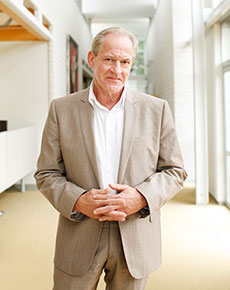Third med school a “shag on a rock” says professor

Professor Max Abbott, Dean of the Faculty of Health and Environmental Sciences at Auckland University of Technology (AUT), says a third medical school at Waikato University would be a “shag on a rock” and will not address urgent, longer-term rural health needs.
“We don’t just need more doctors in rural practice. Nurses and many other health professions play critical roles, and there is huge potential to extend scopes of practice and work more collaboratively in interdisciplinary teams. We don’t need more of the same, we need to do things differently and better.”
Professor Abbott says it is critical to increase rural recruitment and retention of a wide range of health professionals, not just doctors. He emphasises that while universities have an important part to play in this, factors outside education are also important.
“It would take at least seven years before a new medical school has its first graduates, and would have limited impact on rural doctor numbers. More significantly, the school would be a shag on a rock,” he says. “The university has virtually no other health professional education programmes. It will do nothing to increase rural staffing in these areas, and its medical graduates will not have engaged in interdisciplinary education and be prepared to work in multidisciplinary teams.”
Professor Abbott believes that aside from the rural practice issue, New Zealand does not face a medical workforce shortage, and there are serious downsides to over-providing doctors.
“Within two years the Otago and Auckland schools will produce around 570 medical graduates a year, an increase of over a third in a decade. Combined with huge increases in Australian graduate numbers, we will very likely have an over-supply in a few years. Already some DHBs have difficulty finding places for junior doctors. This is bad news for medical graduates who can’t get work.”
According to Professor Abbott the main issue with the medical and wider health workforce is its distribution, not overall numbers. He argues this needs a national approach and coordination involving North and South Island universities that provide health professional education – not a Waikato regional focus.
“Otago, Auckland and AUT – universities that together provide the great majority of health graduates, postgraduate education and research – are working collaboratively to strengthen their existing rural education hubs and networks, and expand the number of students placed in rural settings. We welcome involvement from other education providers.”
Professor Abbott notes the three universities’ plans could be greatly accelerated with Government support, and would have a huge impact within a few years.
Additional medical schools will be required in future as the population expands, he says, but they should be established using open tender and rational decision-making processes. He cautions against inflating graduate numbers prematurely – an option that would be expensive, with massive direct and opportunity costs, and that would hold back much needed innovation and efficiencies in service delivery.